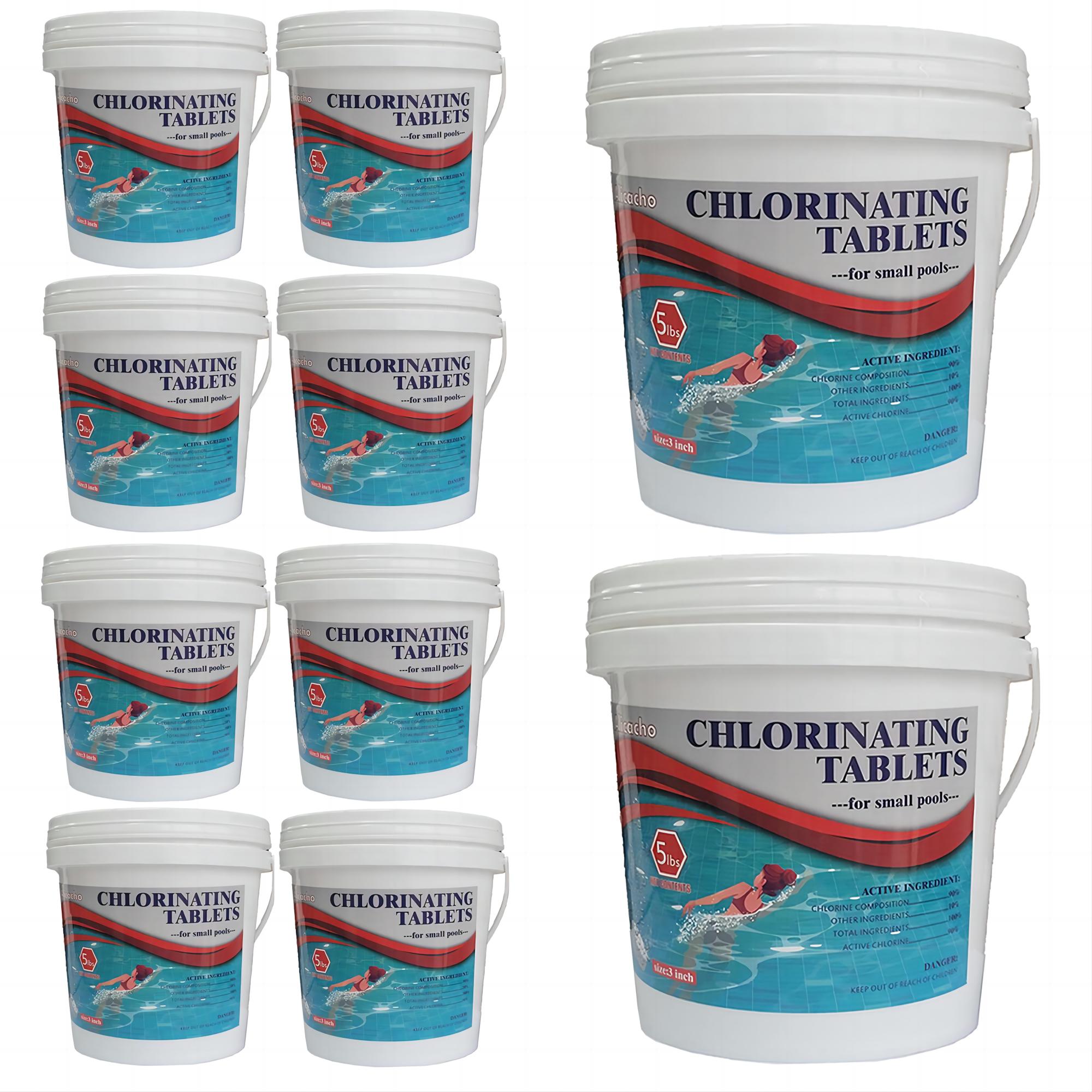As a pool owner, you probably have tried lots of things to make DIY pool cleaning work. Creating your cleaning plan and getting all the work done by yourself would help you save tons of money, which you can use to buy other pool essentials. It may be tiresome, but it is also a great thing that you can familiarize yourself with all the important things to check and maintain on your pool.
You can also be aware of the different chemical levels that you have to maintain, making it easier for you to adjust as needed. You may not also need to always ask for the opinion and help of pool experts if you can already do the job. Furthermore, you are not just saving lots of money from it, you gain knowledge and get to save the status of the pool as soon as possible preventing the worst-case scenario from happening.
In this article, we are going to give you many important tips that you can consider in creating your DIY pool cleaning checklist. This will help you not skip all the necessary points to execute, so you can achieve a sparkling, clean, healthy, and safe swim in pool water!
Part 1. Tips For Your DIY Pool Cleaning
If it is your first time owning a pool, you may have initially conducted thorough research about it. You may also have thought of executing DIY pool cleaning to save a lot of resources. But, before you opt to clean your pool on your own, there are factors that you have to consider.
You have to make sure that you get to familiarize yourself with all the pool essentials that are deemed necessary, specifically chemical levels. Of course, it is also a must that you know your pool, monitoring everything about it from time to time, would be a huge help in maintaining a clean and healthy pool.
You have to be aware that, in a pool, chemical balance matters. If you can’t play with level maintaining and balancing, then you may have an initial rough start. And this is why we are here, to give you important things, and help you create your own DIY pool cleaning checklist.
So, what do you have to remember in executing your DIY pool cleaning? Let us give you some tips, below.
1. Using Baking Soda to Raise Your Swimming Pool's Alkalinity
If you are looking for one of the best ways to increase the pH and alkalinity of your pools, you can opt to use baking soda. It is one of the usual home remedies that are easy to collect and to get as well. You just have to remember the rule of thumb that for every 10,000 gallons of pool water, you can use one pound of baking soda, this will increase alkalinity by 7 ppm, and increase pH level by 0.2.
2. Use Pool Shock To Clear Up a Cloudy Pool
- Protect Yourself: Wear goggles and gloves.
- Prepare Solution: Mix pool shock with water in a bucket.
- Apply Shock: Pour the solution around the pool's edge with the pump running.
- Wait: Let it sit for about six hours.
- Safety First: Don't swim until chlorine levels drop below 5 ppm.
This process targets bacteria, algae, and contaminants, restoring your pool to sparkling clarity.
3. Consider Adding Chlorine Tablets to Your Pool Maintenance Routine.
Adding sanitizing chlorine tablets to your pool is crucial for maintaining clean and bacteria-free water. These tablets slowly dissolve, releasing chlorine to kill bacteria in the water. Follow the instructions on the label for proper dosage and add them to your pool or a dispenser for even distribution.
4. Use Vitamin C and Citric Acid to Remove Metal Stains.
It is such a pain in the eye to see lots of metal stains on the floor and walls of your pool, well to remove it, you can use to get rid of it using vitamin C. For you to do it, you have to:
- Get a handful of vitamin C pills and start putting them in a sock.
- Make sure to wrap the sock tightly.
- Start rubbing the part of the sock that contains vitamin C against the metal stains.
- If you still see stains, continue buffing all of them using the sock.
Once vitamin C breaks down, it will surely remove all the stains effectively, you also have the option to crush up the vitamin C so it will turn to powder before you put it in the sock.

5. Use Old Pantyhose to Make a DIY Skimmer Sock.
If you have owned a pool before, you must have noticed how fast is it to fill up your pool’s skimmer basket, this is most especially during leafy months. If you do not collect it as usual, it may end up on your filter, and as a result, clog it. There is a way to prevent it from happening and it is called a DIY skimmer sock, to make one, you have to:
- Get an old pair of pantyhose.
- Start stretching the pantyhose over the skimmer basket.
- You have to make sure it is tied up well.
- Start placing the sock-lined skimmer basket in the skimmer hole.
By trying to do it, you can now have a more effective way to catch debris in your pool. You also save time and money from buying and replacing skimmers with new ones.
6. Using Old Window Screens as Skimmer Net Replacements.
There are instances that you have a skimmer, however, the skimmer’s net is already ripped. But there is no problem with it, you can get your old window screen and use it as a replacement. To secure it, using a stapler or duct tape will do. You have to make sure that it is properly attached to the skimmer itself.

7. Warm Up Your Pool Water Naturally with a Black Hose.
It would be cheaper to use a black hose to warm up your pool water, it is like a DIY heater. It may not be enough to work as a pool heat pump, but it will still make a difference, especially if it is sunny days. As the heat of the sun gets stronger, the black hose absorbs the heat, and this heat is transferred to the water that flows through it. You can make your DIY pool heater using a black hose through the following:
- Get a 100ft garden hose and connect it to your outdoor water valve.
- Start stretching the hose going to your pool.
- You have to look for a sunnier spot and wrap 80 percent of the hose in the coil formation.
- Make sure that the free end of the hose is in your pool water.
- Start turning on the water, and you can leave the black hose to naturally act as a heater.
8. Cleaning Your Pool Floor Without a Vacuum: Utilize a Hose, Brush, and Main Drain.
Some pools do not have a main drain, and if your pool does not have one you may find it hard to clean. And you may even find it more difficult if you do not have an automatic cleaner or a vacuum. But we can still do something, here, we are going to give you an idea of what to do, you just have to make sure you have a pool brush, PVC hose, and a pool pump. To use these materials in cleaning your pool, you have to:
- Start attaching your hose to the skimmer opening, this will serve as your vacuum.
- Then get your pool brush and push the debris to bigger piles.
- Finally, using your vacuum hose, quickly clean up all the piles of debris.
9. Lowering Your Pool Water pH with Muriatic Acid.
Another one that you can do your DIY pool cleaning is to use muriatic acid whenever you see that the pH level is too low. To use it, these are the steps that you have to follow.
- Get a 10-gallon bucket and fill it with water.
- You need to add a cup of muriatic acid to the bucket with water.
- Stir the acid and water.
- Start pouring the water and acid mixture into your pool water.
When using muriatic acid, there are lots of things that you have to remember, these are:
- NEVER add water to acid, an explosive chemical reaction will happen.
- Do not open a bottle of muriatic acid in a closed space.
- Wear protection equipment for your body, face, skin, and mouth.
All that we have discussed above are only some of the tips that you can consider in formulating your DIY pool cleaning! It is nice to have clean and healthy pool water, and it is even nicer to achieve all of it at a very economical price!
Part 2. FAQs
1. Why do You Have to Maintain Your Pool?
If a pool is clean, it is safe and healthy to swim in. Once the pool water is too dirty, it will eventually endanger the health of people who use it. If there are lots of bacteria present in pools, it can cause major sickness to users, which can even be fatal sometimes.
2. Is it Okay to Do DIY Pool Cleaning?
There is nothing more effective than maintaining your pool. You have to love what is yours and of course care for it. It would also be a cheaper choice, and you will also learn a lot from it. But, there are issues when the help of professionals will be better, like malfunctioning of pumps, leaking, and a lot more.
3. How Often Should I Shock My Pool?
To maintain clean and contaminant-free water, aim to shock your pool approximately once a week, with extra shocks after heavy use. Look out for signs like cloudy, foamy, green, or odorous water as indicators that your pool needs shocking.





